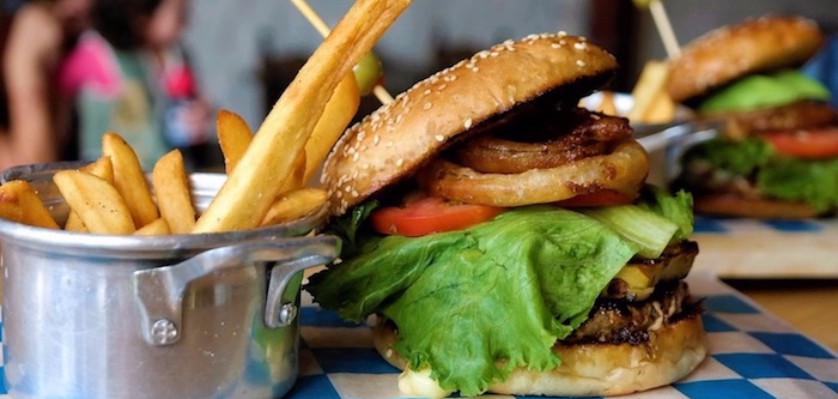When did our Appetite for Meat get so Big?

The global food industry implicates a very large group of people: everyone on the planet.
People can survive without many things but we cannot survive without food, the production of which has become a serious environmental concern. The world’s rapidly growing population requires more and more food, which in turn is producing alarming consequences for our environment. Of particular concern is meat production for which demand continues to be explosive. The meat industry is a primary contributor to annual carbon emissions globally as modern practices of animal raising directly contribute to water and air pollution and increase carbon dioxide emissions. Consider the following:
· Roughly a third of the planet’s landmass is dedicated to growing livestock, and in the United States alone about 10 billion land animals are raised for dairy, meat, and eggs each year;
· Factory farming accounts for 37% of methane CH4 emissions, which has more than 20 times the global warming potential of CO2;
· Globally, deforestation for animal grazing and feed crops is estimated to emit 2.4 billion tons of CO2 every year.
The meat industry is estimated to be responsible for about 9% of total carbon dioxide emissions. But over and above carbon emissions, animal husbandry (the management and care of farm animals by humans) poses a serious threat to local ecosystems and biodiversity due to the use of the land for grazing and animal feed production. As a result, wildlife species struggle with lack of habitat, while some are even threatened with extinction.
Now the logical question is, when did our appetite for meat get so big? It wasn’t so long ago that meat was considered quite a luxury, unaffordable to most. In economic theory, food such as meat is referred to as a ‘normal good’, meaning that as people’s incomes rise they wish to consume more of it. This is exactly what’s taken place: rising income levels over the past few decades have produced an exponential increase in demand for meat. The fast food industry has made frequent meat consumption a possibility for those who might otherwise not be able to afford it.
You probably wouldn’t think of eating a Big Mac as contributing to your carbon footprint but the intensive resources required to make just a standard cheeseburger, from growing the wheat to make the buns to feeding the cattle, and eventually their slaughter, and even the energy required to pickle the cucumbers, all converts to a staggering 1 – 3.5 kg of carbon emitted into the atmosphere. Fast food also requires a massive amount of packaging. From the wrappers and straws to the boxes and bags, fast food packaging accounts for an estimated 40% of all litter with Styrofoam being the most common food waste. What’s more, Styrofoam takes an unbelievable 900 years to breakdown in landfill!
Does all this mean that meat should not be part of our diet? No, not likely. However, it does imply that we need to think about where the food on our plate comes from, and how sustainable our diets are in the long run. In other words, 8 billion people eating meat as part of their everyday breakfast, lunch, and dinner does not bode well for our continued effort to stem the tide of rising global temperatures.








COMMENTS